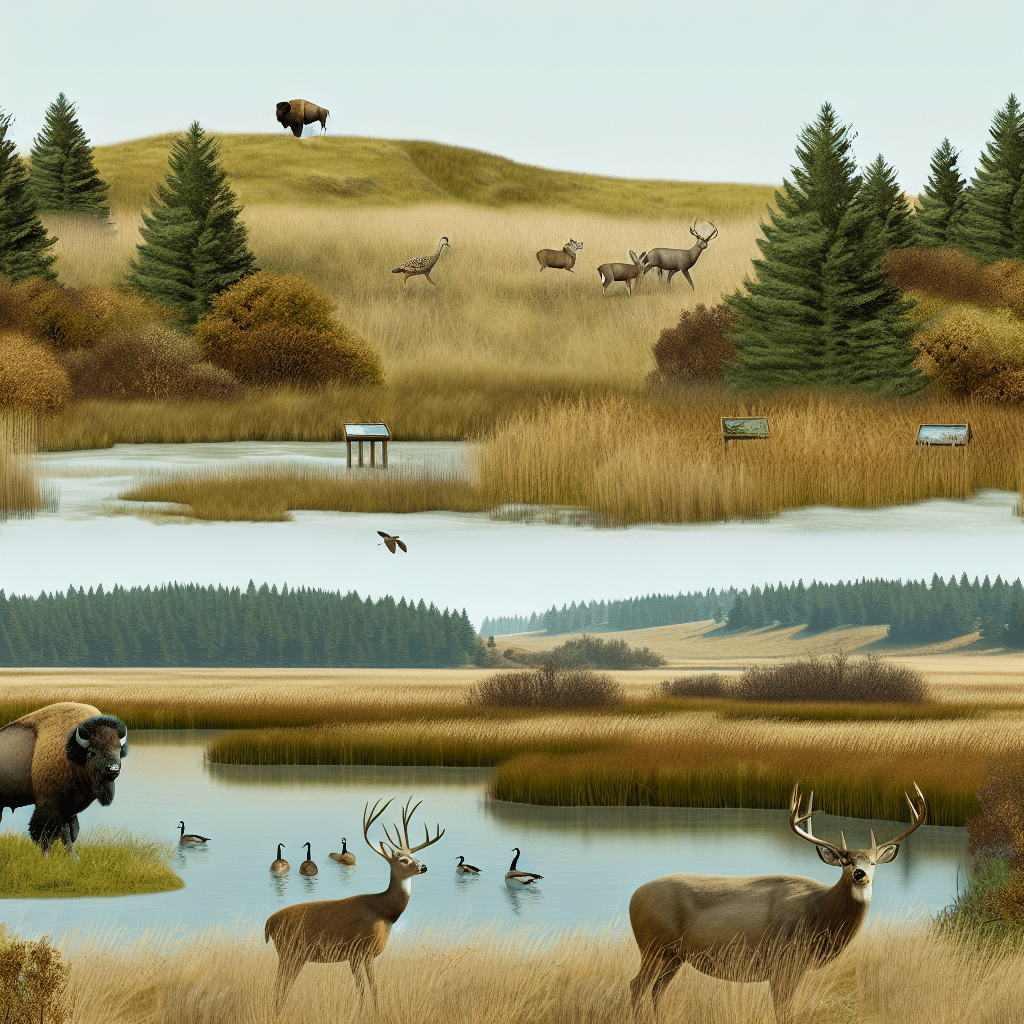Exploring the natural world offers countless rewards, from the awe of witnessing majestic creatures to the peace found in serene landscapes. At the Lee G. Simmons Conservation Park and Wildlife Safari, visitors are offered an immersive escape into a world where wildlife roams freely and conservation is a paramount mission. This exceptional destination, located in Ashland, Nebraska, is much more than a tourist attraction; it’s a testament to the efforts in preserving our planet’s biodiversity.

What Awaits You at Lee G. Simmons Conservation Park and Wildlife Safari?
Picture yourself driving through a sprawling expanse of pristine wilderness, where elk, bison, and cranes meander across your path. This is the everyday reality at the Lee G. Simmons Conservation Park and Wildlife Safari, a 440-acre haven that brings you face-to-face with some of North America’s most impressive wildlife.
Safari Adventure
The primary draw of the park is undoubtedly its four-mile wildlife drive, where visitors remain in their vehicles as they traverse through various ecosystems designed to mirror the animals’ natural habitats. The journey begins with the Wetlands, home to a plethora of birds, turtles, and frogs. As you continue, you’ll encounter the majestic elk and bison herds grazing in open fields, giving you a rare glimpse of these powerful creatures in a setting that closely resembles their natural environment.
Wildlife Encounters
One of the park’s highlights is the Elk Prairie, where visitors can observe these magnificent animals up close. Often, you’ll see them engaging in their natural behaviors, such as foraging for food or tending to their young. Just beyond lies the Bison Plains, a vast area where bison roam freely. Watching these icons of the American frontier is a humbling experience, reminding us of the rich history and diversity of North American wildlife.
More Than Just a Safari: Other Attractions at Lee G. Simmons Conservation Park and Wildlife Safari
While the safari drive is a significant attraction, the park offers much more to explore.
The Eagle Aviary
An essential stop is the Eagle Aviary, a sanctuary for rehabilitated bald eagles that are unable to return to the wild. This exhibit not only provides a safe haven for these majestic birds but also offers an educational experience for guests eager to learn about the conservation efforts surrounding one of America’s most iconic species.
Wolf Canyon and Bear Woods
Wolf Canyon offers a unique opportunity to observe North American gray wolves. These social creatures can often be seen playing, resting, or howling, providing insight into their complex behaviors and pack dynamics. Adjacent to Wolf Canyon is Bear Woods, where black bears roam. This exhibit is designed to mimic their natural habitat, complete with trees, streams, and climbing structures, allowing visitors to see these incredible animals in a setting that encourages natural behavior.
Why Conservation Matters at Lee G. Simmons Conservation Park and Wildlife Safari
The park is not just a place for entertainment; it’s a hub for conservation education and efforts.
Educational Programs
The Lee G. Simmons Conservation Park and Wildlife Safari offers various educational programs aimed at teaching visitors about the importance of wildlife conservation. From guided tours to hands-on activities for children, these programs are designed to foster a deeper understanding and respect for the natural world. They emphasize the role each individual plays in protecting our planet’s biodiversity.
Research and Rehabilitation
In addition to public education, the park is heavily involved in research and rehabilitation efforts. The staff includes experts in wildlife biology who conduct research to improve conservation strategies for various species. Additionally, the park offers rehabilitation services for injured wildlife, striving to release them back into their natural habitats whenever possible.
Making the Most of Your Visit
To ensure a fulfilling experience at Lee G. Simmons Conservation Park and Wildlife Safari, it’s important to plan ahead. The park is typically open from April through October, making spring and summer ideal times for a visit. Early mornings and late afternoons are often the best times to see animals active in cooler temperatures.
Pack a picnic and take advantage of the park’s scenic picnic areas, or visit the café for a quick bite. Don’t forget your binoculars and camera to capture the stunning sights and sounds of this unique environment. Whether you’re a solo traveler, a couple, or a family, the park offers an enriching experience for all ages.
Conclusion: A Commitment to Wildlife and Education
Lee G. Simmons Conservation Park and Wildlife Safari is more than just a visit; it’s a journey into the heart of nature and a rare opportunity to witness wildlife in a setting that prioritizes their well-being and conservation. As you drive through the park, explore the aviaries, and engage in educational programs, you’ll gain a deeper appreciation for the efforts to protect our planet’s incredible biodiversity.
Make your next adventure an enriching one by visiting Lee G. Simmons Conservation Park and Wildlife Safari, where every turn brings you closer to the wild and every moment is a step towards greater environmental stewardship.



